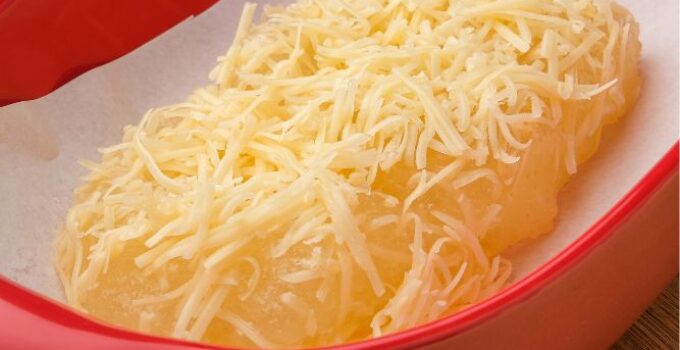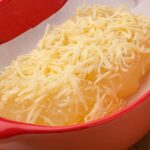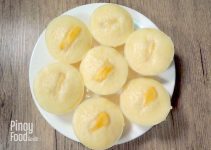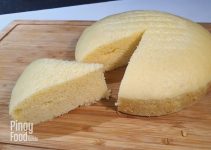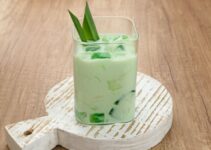Being a little picky than usual when looking for the perfect dessert? If you’re growing tired of Western-influenced desserts such as chocolates and other sweet bread, the best alternative to go for is one of our own special delicacies!
You might think that these are only for special occasions, but really, who’s stopping you? Pichi-Pichi (or Pitsi-Pitsi) is one of the popular treats you can find here in our country, and since it’s so easy to make, you can make it on the regular.
In this article, you don’t have to be picky-picky anymore because now you will learn how to make the yummy Pichi Pichi! This is definitely a treat that will always make you crave even just imagining it.
Before you even realize it, you’ll be stuffing down these delectable desserts, or you know, you can make these as a “pasalubong” to family and friends, if there ever comes a situation where you don’t gobble them up. Just kidding! Read on to see more tips and tricks and some trivia about the Pichi Pichi.
What is Pichi Pichi?
Pichi Pichi is one of the Philippines’ famous traditional kakanin which is made from grated cassava that is made into a stick and gelatinous texture by steaming and is usually smothered with toppings like grated coconut and grated cheese.
The treat originated from the province of Quezon and has since then spread out all over the country with some variations in different places here and there.
Ingredients You’ll Need
Cassava
Cassava or kamoteng kahoy is a root crop which originally came from South America and it was introduced to us during one of the trades or what is called galleon back in the 16th century. It is now one of the main crops grown here in the Philippines.
Depending on where you are, you have the options to use fresh or frozen cassava for this dish. Read the sections below for tips on using this.
Buko Juice or Pandan Water (and How to Make)
In case you do not want to use young coconut (buko) juice, you have an alternative option of using pandan water. To make this, all you have to do is to grab a couple of fresh pandan leaves, and then boil it. Once it’s good, all you have to do is to strain the water from the leaves.
Lye Water (Lihiya)
Lye water is an essential ingredient if you want to make the Pichi Pichi more firm. But it is still acceptable if you don’t have it with you. The end result will just be softer than the usual but it will still have the same flavor. Other alternatives include the use of baking soda solution.
Aside from these, we will also be using other baking pantry ingredients like sugar and the topping of your choice (see section below). If you are filling up your pantry, here’s a handy shopping guide:
Fresh Cassava for Pichi Pichi
It is not always a bad idea to use ready-made ingredients such as frozen grated cassava which you can get from the market. But if you want fresher ingredients for the Pichi Pichi for a richer taste, you have the option to do that. Instead of getting grated cassava, get a half kilo cassava.
When preparing, what needs to be done is to peel it first and chop into finer pieces. Follow the layer of the skin so you know where to peel. Then grate them using a blender or a food processor. If you don’t have these available with you, just skip chopping the cassava and proceed to manually grate it.
Frozen Cassava for Pichi Pichi
Cassava is available in the Philippines all year round. However, if you are not in the country, chances are you’ll find frozen ones in Asian stores. Here are some tips on how to prepare frozen cassava:
- You can purchase pre-grated cassava and use it as is without squeezing out the liquids.
- If you have whole frozen cassava, let it thaw slightly if it is too hard or icy. Avoid thawing it completely, as this will make grating more challenging.
- If you have a food processor with a grater attachment, that’s a great option. Alternatively, use a manual rotary food grater or an old-fashioned cheese grater.
Equipment You’ll Need
- Steamer- You will be needing a steamer or a steaming pot to cook this delicacy. Some rice cookers today have a steamer attachment, you can use this as well.
- Plastic Molds– You will also need plastic molds that will shape the Pichi Pichi and serve as its vessel while steaming. This are similar to puto molds and you’ll need about 30 of these or cook by batch.
In need of kitchen tools and equipment? Read this before you buy:
How to Make Pichi Pichi
Making Pichi Pichi in the comfort of your own household is super easy. The cooking time is minimal and if you want to make things even more convenient, you can buy ready made ingredients for these which are available in markets.
All you have to do is mix the combine the ingredients, place them in individual plastic molds, and then steam.
To avoid any mistakes and maintain a clean working station, make sure that you brush the plastic molds with cooking oil before filling them with the Pichi Pichi mixture. This is to avoid the mixture from sticking to the molds. Also when steaming the Pichi Pichi, don’t forget to cover the steamer lid with a towel to prevent water from dripping.
Cooking Tips
- Greasing the molds is not necessary, simply dip them in a bowl of water and leave a thin film of moisture on the inside to prevent sticking.
- Allow the mixture to sit for 30 minutes to an hour prior to pouring into molds.
- While pouring, stir the mixture regularly to evenly distribute the cassava and prevent settling.
- Cover the steamer lid with cheesecloth or light cotton to prevent steam from dripping onto the cakes.
- Once done, put the Pichi Pichi in the refrigerator to cool and set. To remove from molds, run a blunt knife around the edges to loosen and release the cakes.
Flavors and Colors for Pichi Pichi
We usually go for natural ways for our Pichi Pichi to have delicious flavors like using buko juice or pandan water in the mixture. However, if these are not available, you could always go for artificial flavors you can buy in the grocery stores or in supermarkets.
Adding a few drops will do wonders and they can even enhance the flavor even if you are already using natural flavors. Here are some common Pichi Pichi flavors you can try:
- Ube Pichi Pichi
- Pandan Pichi Pichi
- Buko Pichi Pichi
- Buko Pandan Pichi Pichi
You could also match these flavors by using food colors like green, red, and purple.
How to Serve Pichi Pichi
Pichi Pichi is usually served as a sweet snack or as a dessert. You can warm it up if you like but it is optional. You can also serve it on its own but I suggest that you add toppings for best results! See some suggested topics on the section below.
Optional toppings for Pichi Pichi
We have several choices when it comes to topping our Pichi Pichi, here’s a list of common toppings you can try:
- grated cheddar cheese
- grated coconut
- granulated sugar
- macapuno
- sweetened buko (minatamis na buko)
Not on the list? Share your unique topping in the comments below!
How to Store and Reheat Pichi Pichi
In case of leftovers, store in a clean food container with lid and refrigerate them for up to 3 days. Keep in mind that the longer they sit, the harder they become, so to fully enjoy their soft and chewy texture, it’s best to consume them on the day they’re made.
The best way to reheat this is to steam again since the texture may change if you use a microwave oven.
Other Cassava Recipes
For a quick reference about this recipe, see the recipe table below:
Pichi Pichi Recipe
Equipment
- Steamer
- Plastic Molds
Ingredients
For the Pichi Pichi
- 2 ½ cups cassava, grated
- 1 cup sugar
- 1 cup young coconut (buko) juice, or pandan water
- 2 drops of flavoring, buko, pandan, or buko-pandan (optional)
- ½ tsp lye water (lihiya), see notes on ingredients section above
- 2 to 3 drops of food color, color of choice (optional)
For the Topping
- ⅓ cup cheese, or coconut, grated
Instructions
- In a mixing bowl, add-in the grated cassava, and sugar. Then pour-in the young coconut (buko) juice, and lye water while continuously stirring. Mix until well-incorporated.
- Prepare individual plastic molds and brush them with cooking oil.
- Pour-in the mixture into the plastic molds.
- Arrange the plastic molds in a steamer. Steam for 30 to 40 minutes or until translucent. Wrap the steamer lid with a towel or a cloth to prevent the water from dripping.
- Let cool and transfer to a serving tray. Top with grated cheese or grated coconut as desired. Serve and enjoy!
Notes
Nutrition
Pin and save this recipe to your Pinterest account! Click on the Pin button above 🙂
Thank you and I hope you find this article useful! It’ll mean a lot if you RATE THE RECIPE by clicking the stars and SHARE THIS TO YOUR FRIENDS! 🙂
